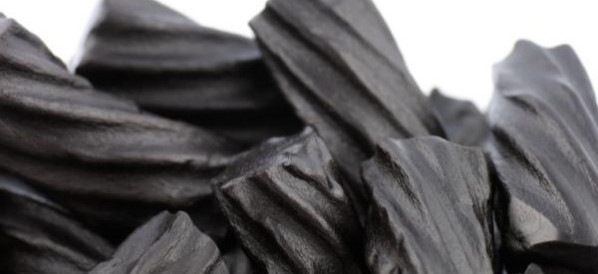 1 Terms
1 TermsHome > Terms > English, UK (UE) > German question
German question
In the 19th century, especially during the Revolutions of 1848, the German question was a debate over the best way to achieve the Unification of Germany.
After the dissolution of the Holy Roman Empire and the Napoleonic Wars, about 37 independent German-speaking states existed within the German Confederation.
The solutions are also referred to by the names of the states they proposed to create, Kleindeutschland and Großdeutschland ("Lesser Germany" and "Greater Germany"). Both movements were part of a growing German nationalism. They also drew upon similar contemporary efforts to create a unified nation state of people who shared a common ethnicity and language, such as the unification of Italy by the House of Savoy and the Serbian revolution for independence. The "Großdeutsche Lösung" ("Greater German solution") favoured unifying all German-speaking peoples under one state, and was promoted by the Austrian Empire and its supporters. The Kleindeutsche Lösung ("Lesser German solution") sought only to unify the northern German states and did not include Austria; this proposal was favoured by the Kingdom of Prussia.
In 1848, German liberals and nationalists united in revolution, forming the Frankfurt Parliament. The Greater German movement within this National Assembly demanded the unification of all German-populated lands into one nation. In general, the left favoured a republican Großdeutsche Lösung, whereas the liberal centre favoured the Kleindeutsche Lösung with a constitutional monarchy.
Those supporting the Großdeutsche position argued that since the Habsburgs had ruled the Holy Roman Empire for 400 years, Austria was best suited to lead the unified nation. However, Austria posed a problem because the Habsburg lands were linked with the Kingdom of Hungary including large Slovak, Romanian and Croat populations. It further comprised numerous possessions with predominantly non-German populations, including Czechs in the Bohemian lands, Poles, Rusyns and Ukrainians in the Galician province, Slovenes in the Carniola as well as Italians in Lombardy-Venetia and Trento, which was still incorporated into the Tyrolean crown land, all together making up the larger part of the Austrian Empire. Except for Bohemia, Carniola and Trento, these territories were not part of the German Confederation because they had not been part of the former Holy Roman Empire, and all of them had no desire to be included into a German nation state. The Czech politician František Palacký explicitly rejected the offered mandate to the Frankfurt assembly, stating that the Slavic lands of the Habsburg Empire were not a subject of German debates. On the other hand, for Austrian prime minister Prince Felix of Schwarzenberg, only an accession of the Habsburg Empire as a whole was acceptable because it had no intention to part from its non-German possessions and dismantle in order to remain in an all-German Empire.
Thus, some members of the assembly and namely Prussia promoted the Kleindeutsche Lösung which excluded the whole Austrian Empire with its German and its non-German possessions. They argued that Prussia, as the only Great Power with a predominantly German-speaking population, should lead the unified Germany. Yet, the drafted constitution provided for the possibility for Austria to join without its non-German possessions later. On March 30, 1849, the Frankfurt parliament offered the German Imperial crown to King Frederick William IV of Prussia, who rejected it. The revolution failed and several subsequent attempts by Prince Schwarzenberg to build up a German federation headed by Austria came to nothing.
- Part of Speech: proper noun
- Synonym(s):
- Blossary:
- Industry/Domain: History
- Category: European history
- Company:
- Product:
- Acronym-Abbreviation:
Other Languages:
Member comments
Terms in the News
Featured Terms
Black licorice
Black licorice is a candy flavoured with the roots of the liquorices plant. The main ingredients are liquorices extract, sugar, and a binder. In small ...
Contributor
Featured blossaries
Rafael Treviño
0
Terms
1
Blossaries
6
Followers
Deaf Community and Sign Language Interpreting
 1 Terms
1 TermsAkins
0
Terms
4
Blossaries
2
Followers
My favorite Hollywood actresses
 5 Terms
5 TermsBrowers Terms By Category
- Hair salons(194)
- Laundry facilities(15)
- Vetinary care(12)
- Death care products(3)
- Gyms(1)
- Portrait photography(1)
Consumer services(226) Terms
- Industrial lubricants(657)
- Cranes(413)
- Laser equipment(243)
- Conveyors(185)
- Lathe(62)
- Welding equipment(52)
Industrial machinery(1734) Terms
- Biochemistry(4818)
- Molecular biology(4701)
- Microbiology(1476)
- Ecology(1425)
- Toxicology(1415)
- Cell biology(1236)
Biology(22133) Terms
- Festivals(20)
- Religious holidays(17)
- National holidays(9)
- Observances(6)
- Unofficial holidays(6)
- International holidays(5)
Holiday(68) Terms
- Marketing communications(549)
- Online advertising(216)
- Billboard advertising(152)
- Television advertising(72)
- Radio advertising(57)
- New media advertising(40)



